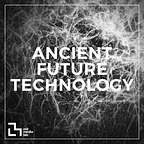[AFT Fall ’21] If Songs Are Alive, Why Can’t AI Be Alive?
Can AI exist with, for, or as nature?
By Cecilia Vilca
All the answers to this question are contained in what we humans have defined as AI: “Artificial intelligence is the ability of a computer program or a machine to think and learn. In general use, the term means to mimic human cognition” (Wikipedia). That is to say, a non-human that acts as one.
I can also answer this question through the voices of objects, mountains, the jungle, cities. They are sitting in times that are intertwined with other times, they talk, and I listen.
We would have to ask ourselves what we mean by “artificial”, what fits into this definition? The limits between the natural and the artificial merge, if we consider that our intervention has been permanent and constant since our appearance as a species in the world. The natural thing in the human being is the artifice. And who or what can be considered as “human”? Sometimes it seems that this category is a prize, an “update of the being.” In which it seems that not all of us are included.
Making kin with the machine or the spirit of objects.
Why do stones deliver messages and choose persons or why do I name my devices and have feelings for cities?
I must confess that I am a human who would rather be an AI than a goddess.
Dylan Robinson says that there are those who do not understand that the songs are alive, and I cannot stop asking him how is this possible?
Definitions are dynamic entities, but what has been constant for a long time is the western way of seeing the world in opposites, and that these also compete for control. Artificial is opposed to the human, and artificial is opposed to nature. And everything that departs from the human is quickly labeled as a threat. However, all these classifications and hierarchies do not exist for indigenous worldviews, which are very different between them but have in common human beings in nature. Nature, in turn, is a greater whole, and is considered to possess spirit. In addition, other entities, such as objects and places, are respected. Following the initial logic, if AI imitates or pretends to replicate human behavior, and within what is human, indigenous peoples are considered, then of course AI can exist with nature and even more for nature: An indigenous AI.
I am in Kuelap, the citadel built among the clouds, the Sachapuyu, never called a fortress. Almost sculpted in the northeastern Andes of Peru there was a temple. Nature was (is) the temple. How to think otherwise if the name of your people is “cloud array”?
One last answer remains. If songs are alive why can’t AI exist as nature?
Olga Mori and Olinda Silvano from the Shipibo-Conibo people, culture from the Peruvian Amazon, say that the jungle gives knowledge and that we are the jungle.
Meanwhile, the mantle of Tupinamba has returned to the territories that today we know as Brazil, the object has reincarnated through the dream of Celia Tupinamba, I feel like her, with the message running through my blood. A message that is not spoken and that is constructed from not knowing.
Cecilia Vilca is a Peruvian transartist feminist, chola techno-witch, and language activist. She has an M.A. Digital Arts from Universitat Pompeu Fabra, Barcelona, Spain, and is also a founding member of the art/science and digital heritage division at MyAP — Electron Microscopy Laboratory. Follow her on Instagram (ceci_vilca).
